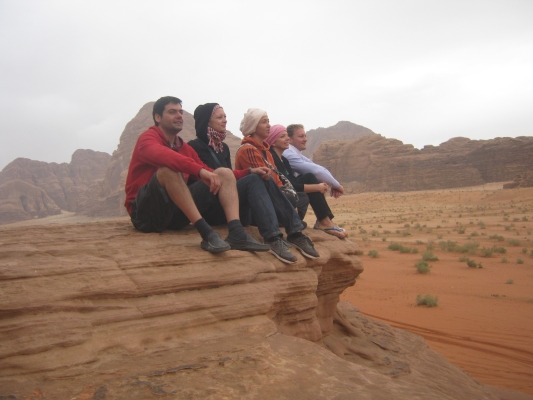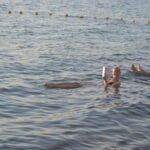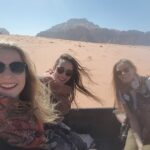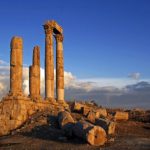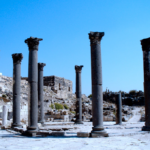Kharana Palace Tour From Different Cite's
Khrana Palace From Amman
The Kharana Palace, Amra Palace, Azraq Castle Day Tour Start From Amman escorted with English speaking driver (From One to Three Persons in a Modern Sedan Vehicle. Four to seven using H1 Minivan ). Pick and drop off to / and from your hotel, early morning at 08:00 am and returns back to Amman around 16:00.
Tour itinerary
08:00 AM Home / Hotel Pick up.
9:00 AM Reach Kharana Palace.
10:00 Drive to Amra Palace.
10:30 Reach Amra Palace.
11:30 Drive to Azraq Castle.
12:30 Reach Azraq Castle.
1:30 Drive to Restaurant For Lunch (Optional).
2:30: Drive back to Amman.
4:00 Drop off your Hotel in Amman.
Inclusions
English Speaking driver.
Modern private Car with AC including gas
(Sedan for 3 Persons,
H1 Van for 4-7 Persons).
Hotel Pick-up and drop-off.
Exclusions
Entrance Fee Not included
Guides
Any Thing Not Mentioned
Entrance Fee
you Can show your Jordan Pass at the Main Entrance or you can buy the Entrance fee ticket from the main entrance.
Note
Lunch in Azraq City Cost around 10 – 12 JOD.
Driver (around 10% Total Charges) Tips Recommended.
Khrana Palace From Dead Sea
The Kharana Palace, Amra Palace, Azraq Castle Day Tour Start From Dead Sea escorted with English speaking driver (From One to Three Persons in a Modern Sedan Vehicle. Four to seven using H1 Minivan ). Pick and drop off to / and from your hotel, morning at 08:00 am and returns back to Dead Sea around 16:30.
Tour itinerary
08:00 AM Home / Hotel Pick up.
9:30 AM Reach Kharana Palace.
10:30 Drive to Amra Palace.
11:00 Reach Amra Palace.
12:00 Drive to Azraq Castle.
1:00 Reach Azraq Castle.
2:00 Drive to Restaurant For Lunch (Optional).
3:00: Drive back to Dead Sea.
4:30 Drop off your Hotel in Dead Sea.
Inclusions
English Speaking driver.
Modern private Car with AC including gas
(Sedan for 3 Persons,
H1 Van for 4-7 Persons).
Hotel Pick-up and drop-off.
Exclusions
Entrance Fee Not included
Guides
Any Thing Not Mentioned
Entrance Fee
you Can show your Jordan Pass at the Main Entrance or you can buy the Entrance fee ticket from the main entrance.
Note
Lunch in Azraq City Cost around 10 – 12 JOD.
Driver (around 10% Total Charges) Tips Recommended.
Khrana Palace From Madaba
The Kharana Palace, Amra Palace, Azraq Castle Day Tour Start From Madaba escorted with English speaking driver (From One to Three Persons in a Modern Sedan Vehicle. Four to seven using H1 Minivan ). Pick and drop off to / and from your hotel, morning at 08:00 am and returns back to Madaba around 16:30.
Tour itinerary
08:00 AM Home / Hotel Pick up.
9:30 AM Reach Kharana Palace.
10:30 Drive to Amra Palace.
11:00 Reach Amra Palace.
12:00 Drive to Azraq Castle.
1:00 Reach Azraq Castle.
2:00 Drive to Restaurant For Lunch (Optional).
3:00: Drive back to Madaba.
4:30 Drop off your Hotel in Madaba.
Inclusions
English Speaking driver.
Modern private Car with AC including gas
(Sedan for 3 Persons,
H1 Van for 4-7 Persons).
Hotel Pick-up and drop-off.
Exclusions
Entrance Fee Not included
Guides
Any Thing Not Mentioned
Entrance Fee
you Can show your Jordan Pass at the Main Entrance or you can buy the Entrance fee ticket from the main entrance.
Note
Lunch in Azraq City Cost around 10 – 12 JOD.
Driver (around 10% Total Charges) Tips Recommended.
Kharana Palace
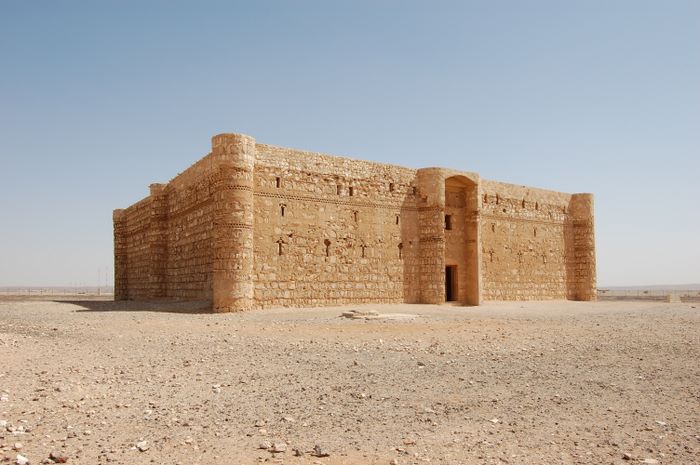
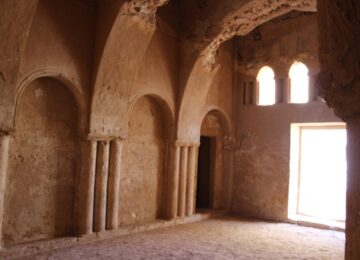
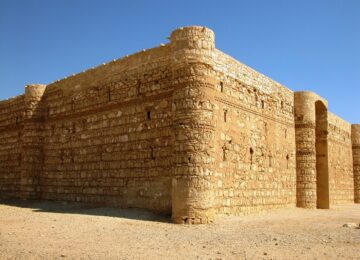
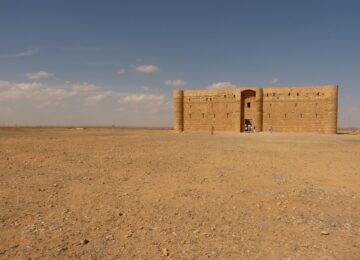
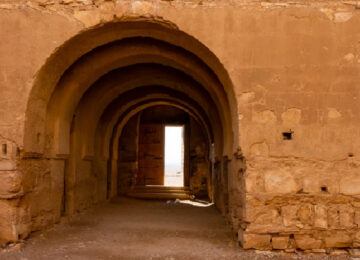
Kharana Palace Overview
Qasr Kharana, sometimes Qasr al-Harrana, Qasr al-Kharanah, Kharaneh or Hraneh, is one of the best-known of the desert castles located in present-day eastern Jordan, about 60 kilometres east of Amman and relatively close to the border with Saudi Arabia.
The only entrance gate is centrally located on the southern façade framed by two quarter-round buttresses. Each corner of the 35 m square structure has a three-quarter-round fortification, while semicircular buttresses support the remaining facades at their centre. Narrow openings appear to be arrow slits, but they are too high and actually serve to provide light and ventilation. This proves that al-Kharana wasn’t a military “castle”. First assumptions typified it as a caravanserai, but it was not on any major trade routes and lacked large water sources. It most probably served as a representative place for political meetings between local tribal communities and Umayyad rulers.
Info From Different Resources
located in present-day eastern Jordan, about 60 kilometres (37 mi) east of Amman and relatively close to the border with Saudi Arabia. It is believed to have been built sometime before the early 8th century AD, based on a graffito in one of its upper rooms, despite visible Sassanid influences. A Greek or Byzantine house may have existed on the site. It is one of the earliest examples of Islamic architecture in the region. Its purpose is hard to ascertain with any degree of certainty.
Located in the middle of a vast, treeless plain, this imposing thick-walled structure was the most likely inspiration for the ‘desert castle’ moniker and is arguably the most photogenic of all the desert castles. There is controversy about its function and purpose, but this important Umayyad structure remains an interesting sight for visitors, of the main Azraq–Amman road.
Although it clearly isn’t a castle, Kharana was a vital building for the Umayyads as evidenced by its dramatic size and shape. Despite the fact that it has the appearance of a khan (caravanserai), Kharana wasn’t located on any major trade route, and there appears to be a total absence of structures for water storage. That just leaves the supposition that the building served as a meeting space for Damascus elite and local Bedouin.
Named after the harra (surrounding gravel plains), Kharana lords imposingly over a harsh and barren moonscape that appears inhospitable for human habitation. Inside, however, the internal courtyard provides a calm, protected space that even the wind fails to penetrate.
Despite its castle-like appearance, there is no evidence that the intimidating two-storey building, with what appear to be round, defensive towers and narrow arrow slits, was ever intended as a fort. In fact, the towers are completely solid, which means that they couldn’t be manned by armed soldiers and it would be impossible to fire bows from the bizarrely shaped ‘arrow slits’, meaning that they most likely served as air and light ducts.
About 60 rooms surround the courtyard inside the castle, and probably served as meeting spaces for visiting delegations. The long rooms either side of the arched entrance were used as stables, and in the centre of the courtyard was a basin for collecting rainwater. Remarkably, the interior is much smaller than you’d imagine as the walls are deceptively thick.
Climb the broad stairways and you’ll find rooms on the upper storeys with vaulted ceilings. Some carved plaster medallions, set around the top of the walls, are said to indicate Mesopotamian influence.
Also in one of the rooms on the second floor is a few lines of Arabic graffiti, which were crucial in helping to establish the age of the fortress. Above the door in simple black script is an inscription that says ‘Abd Al-Malik the son of Ubayd wrote it on Monday three days from Muharram of the year 92’. Stairs in the southeast and southwest corners lead to the 2nd floor and the roof (closed to visitors).
Very little is known about the origins of Qasr Kharana, although a painted inscription above one of the doors on the upper floor mentions the date AD 710, making it one of the earliest forts of the Islamic era. The presence of stones with Greek inscriptions in the main entrance also suggests it was built on the site of a Roman or Byzantine building, possibly as a private residence.
The entrance to Kharana is through the visitor centre, which has some displays of local history. Public toilets are available. The hospitable owner of the adjacent Bedouin tent, which doubles as the site coffeehouse and souvenir stall, will brew you fresh mint tea and take time to discuss the issues of the day. Your patronage will be much appreciated if the current absence of tourism continues.
Kharana is 16km further west along Hwy 40 from Qusayr Amra. There’s no viable public transport along the highway (although it could be included in a round trip by taxi from Azraq, from JD20) and the castle is only signposted coming from Amman. It’s easier to spot than neighbouring Amra, especially as it’s disappointingly close to a power station.
The building is a square 35 metres (115 ft) on each side, with small projecting corner towers and a projecting rounded entrance on the south side. It is made of rough limestone blocks set in a mud-based mortar. Decorative courses of flat stones run through the facing.
On the inside, the building has 60 rooms on two levels arranged around a central courtyard, with a rainwater pool in the middle. Many of the rooms have small slits for light and ventilation. Some of the rooms are decorated with pilasters, medallions and blind niches finished in plaster.
A graffito in one of the upstairs rooms has allowed the building to be dated to c. 710. However, based on the mixture of styles, some scholars argued that structure was built during the Sasanian occupation of the area in the 620s.
The purpose of the structure remains unclear today. “Castle” is a misnomer as the building’s internal arrangement does not suggest a military use, and slits in its wall could not have been designed for arrowslits. It could have been a caravanserai, or resting place for traders, but lacks the water source such buildings usually had close by and is not on any major trade routes.
Scholarship has suggested that Qasr Kharana might have served a variety of defensive, agricultural and/or commercial agendas similar to other Umayyad palaces in greater Syria. Having a limited water supply it is probable that Qasr Kharana sustained only temporary usage. There are different theories concerning the function of the castle: it may have been a fortress, a meeting place for Bedouins (between themselves or with the Umayyad governor), or used as a caravanserai. The latter is unlikely as it is not directly on a major trade route of the period and lacks the groundwater source that would have been necessary to sustain large herds of camel.
Qasr Kharana combines different regional traditions with the influence of the then-new religion of Islam to create a new style. Syrian building traditions influenced the design of the castle, with Sassanid building techniques applied.
The courtyard
The layout follows Syrian houses, themselves influenced by Byzantine and Roman customs. Several rooms are arranged around a saloon, with the house and another apartment arranged around a central courtyard. Like Sassanid buildings, the castle’s structural system is transverse arches supporting barrel vaults.
Rosette with a tree motif of alternating leaves, early 8th century (Pergamon Museum)
The site made it necessary to modify those building techniques slightly. The arches are not connected to the carrying wall, instead placed on bearing arms. The overall weight of the structure keeps these elements together. Some newer building materials, such as wooden lintels, were used, allowing the building to be more flexible and resist earthquakes.
Islamic concepts of public and private were satisfied through the narrow slits offering views to (and from) the outside, larger windows on the inside and the north terrace separating the two apartments. A room on the south side was set aside for prayer.
The wall slits could not have been used by archers as they are of the wrong height and shape. Instead, they served to control dust and light and took advantage of air pressure differentials to cool the rooms, via the Venturi effect.
The architectural style and the decoration of the building show influences from Syrian, Parthian, and Sasanian traditions. Some scholars argue that the structure was built during the Sasanian occupation of the area in the 620s.
The castle was built in the early Umayyad period by the Umayyad caliph Walid I whose dominance of the region was rising at the time. Qasr Kharana is an important example of early Islamic art and architecture.
In later centuries the castle was abandoned and neglected. It suffered damage from several earthquakes. Alois Musil rediscovered it in 1901, and in the late 1970s, it was restored. During the restoration, some changes were made. A door in the east wall was closed, and some cement and plaster were used that was inconsistent with the existing material.
Stephen Urice wrote his doctoral dissertation on the castle, published as a book, Qasr Kharana in the Transjordan, in 1987 following the restoration.
The castle is just south of Highway 40, an important desert road that links Amman with Azraq, the Saudi Arabian border and remote areas of Eastern Jordan and Iraq. It sits on a slight rise just 15 metres (49 ft) above the surrounding desert. The only other structures in the area are power lines.
Qasr Kharana remains very well preserved. Since it is located just off a major highway and is within a short drive of Amman, it has become one of the most visited desert castles.
The area is fenced off with a visitors’ centre on the southeast corner, where the main entrance to the castle area is located. An unpaved driveway leads from the highway to a dirt parking lot large enough for cars and several buses located just south of the entrance.
The castle is today under the jurisdiction of the Jordanian Ministry of Antiquities. The kingdom’s Ministry of Tourism controls access to the site via the new visitor’s centre, charging an admission fee of JD 2 to the site during daylight hours. A Bedouin merchant is also allowed to sell handcrafts and drinks in the parking lot, as at many other Jordanian tourist sites.
Inside, a large interpretive plaque in Arabic and English is located just inside the main entrance. Visitors are free to explore the entire building, although some of the corridors overlooking the courtyard on the second story do not have guardrails and those who walk there must be careful.
Unforgettable Memories Maker
Private Day Tour
Unforgettable Memories Maker
Multi Day Tour
1 Day Tour
Petra,
Wadi Rum,
Dead Sea,
Included & More
1 Day Tour
Interesting sites in Jordan
More Info
2 Day Tour
Petra,
Wadi Rum,
Dead Sea,
Included & More
2 Day Tour
Interesting sites in Jordan
More Info
3 Days Tour
Petra,
Wadi Rum,
Dead Sea,
Included & More
3 Days Tour
Interesting sites in Jordan
More Info
4 Day Tour
Petra,
Wadi Rum,
Dead Sea,
Included & More
4 Day Tour
Interesting sites in Jordan
More Info
5 Day Tour
Petra,
Wadi Rum,
Dead Sea,
Included & More
5 Day Tour
Interesting sites in Jordan
More Info
6 Day Tour
Petra,
Wadi Rum,
Dead Sea,
Included & More
6 Day Tour
Interesting sites in Jordan
More Info
7 Day Tour
Petra,
Wadi Rum,
Dead Sea,
Included & More
7 Day Tour
Interesting sites in Jordan
More Info
8 Day Tour
Petra,
Wadi Rum,
Dead Sea,
Included & More
8 Day Tour
Interesting sites in Jordan
More Info
9 Day Tour
Petra,
Wadi Rum,
Dead Sea,
Included & More
9 Day Tour
Interesting sites in Jordan
More Info
10 Days Tour
Petra,
Wadi Rum,
Dead Sea,
Included & More
10 Days Tour
Interesting sites in Jordan
More Info
11 Day Tour
Petra,
Wadi Rum,
Dead Sea,
Included & More
11 Day Tour
Interesting sites in Jordan
More Info
12 Day Tour
Petra,
Wadi Rum,
Dead Sea,
Included & More
12 Day Tour
Interesting sites in Jordan
More Info
Online Booking
Car with Driver in Jordan
250$ - 160$ Per Day With Driver
Minivan 7 Seat - Good & Comfortable, Most Used Tour Van For Family & Small Groups,enough space for luggage.
150$ - 120$ Per Day With Driver
( Compact ) Sedan Car - Good And Comfortable For 3 Person, Space Enough For 2 - 3 - Medium bag
200$ - 150$ Per Day With Driver
Large - Sedan Car - Good And Comfortable For 3 Person, Space Enough For 2 - 3 - Medium bag
300$ - 230$ Per Day With Driver
SUV - Good And Comfortable For 4 Person (Off Road & Family Car) enough space for luggage, Strong Car
500$ - 400$ Per Day With Driver
Large SUV - Good And Comfortable For Family & small group 5-7 Person (Family Car) enough space for luggage
Car with Driver in Jordan
All The Car with English speaking Driver.
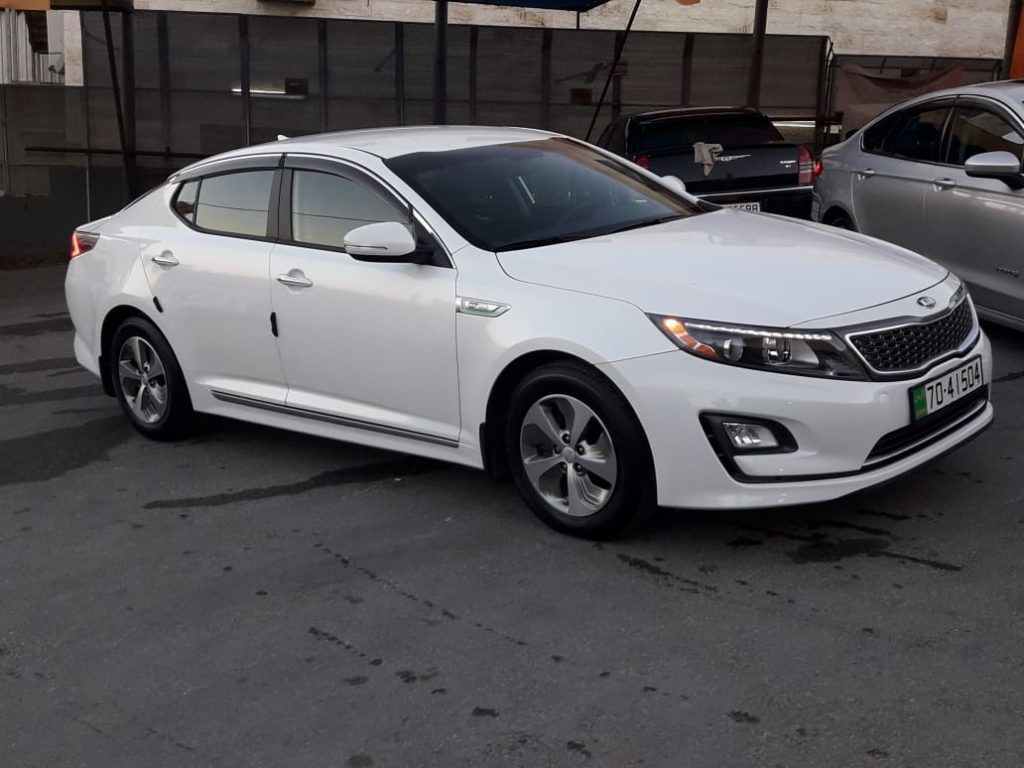
Car with Driver in Jordan
All The Car with English Speaking Driver.
Car with Driver in Jordan Can Drive you
To The Following Sites in Jordan :
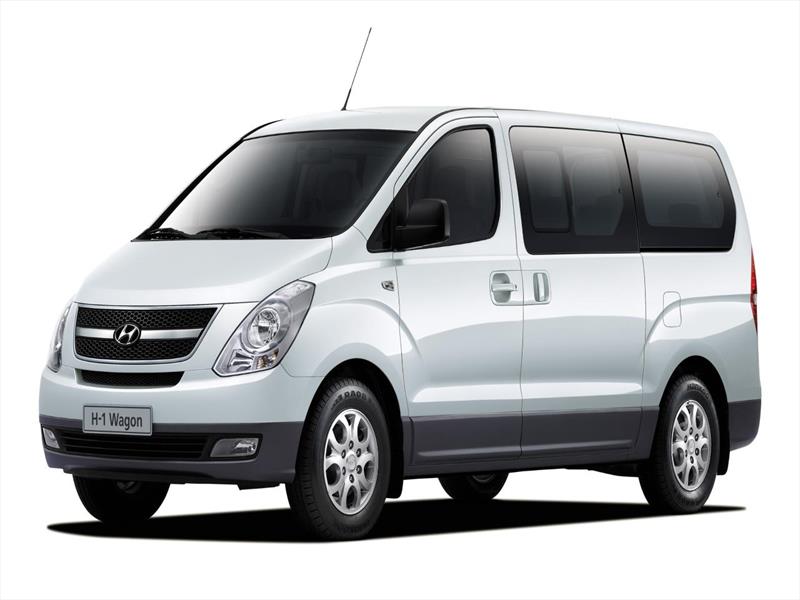
Quote your Jordan Tour itinerary
Quote your Jordan Tour itinerary with our Best Price.
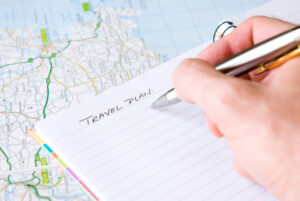
No Credit Card Numbers Please.
You Should Confirm your Booking 48 Hrs Before your Tour.
Request Quote it’s not Just about The Price,
Jordan Tour Service Help you
to decide your Holiday with our advice.
we are happy to recommend and suggest your
Jordan Tour Plane with Different options and Quotes.
Feel Free to visit our other Offers.
